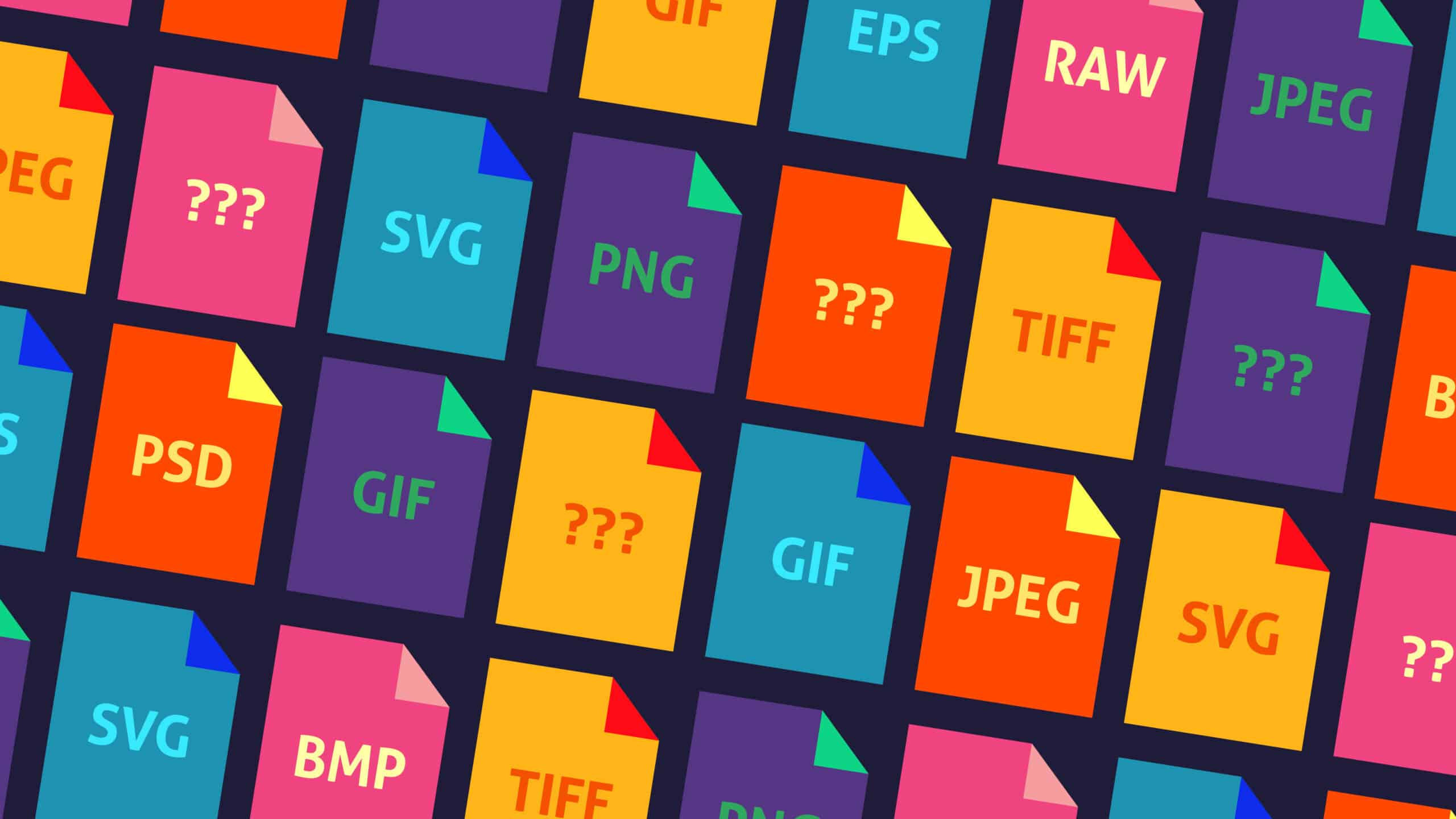When designing graphics, you always want to ensure that you have the best quality across all devices without slowing down the page load time. Thankfully, there are so many formats to choose from, but which ones are suitable for logos, print material, etc.. let’s find out!
Before we get into file formats, let’s discuss vector vs raster. Raster images are made up of pixels to form an image. JPEG, GIF, and PNG are all raster image extensions. Pixel proportions are defined based on their resolutions and can become distorted and blurry if stretched to fill spaces they weren’t intended to fill. Vector images are a lot more flexible. They’re made using proportional formulas rather than pixels. EPS, AI, and PDF are perfect for creating graphics that require frequent adjustments.
Now let’s talk file formats. JPEG (JPG) is the most common format. They are known for their “lossy” compression, meaning the images lose their quality when edited and saved multiple times. You can use JPEGs for projects on the web, in Microsoft Office documents, or for projects that require printing at a high resolution. Paying attention to the resolution and file size with JPEGs is essential to produce a nice, quality project.
PNGs are great for interactive documents such as web pages but are not suitable for print. While PNGs are \”lossless,\” meaning you can edit them and not lose quality, they are still low resolution. With PNG files, you can save your image onto a transparent background which makes for a sharper, web-quality image. PNG and JPEG do not differ much in quality when it comes to detail-rich photographs. However, the file size of PNG is much bigger. PNG is, therefore, best used for images that contain areas with a lot of solid colors and sharp transitions.
GIFS are most common in their animated form. Due to the 24-bit RGB color support (up to 256 colors), the GIF-extension isn’t suitable for color-rich photographs. Graphics with solid colors are recommended for this file type. Since the GIF extension is pretty old, it’s not suitable for modern usage.
TIFF, a popular file format amongst graphic designers, is a large raster file that maintains its quality regardless of how often you compress or re-save the original file. It’s often referred to as a lossless compression because of this. Since TIFF extensions are big file sizes, they are less suited for web usage and are therefore better for editing and preservation.
A PDF file is an Adobe invention and a great universal tool for sharing graphics. If a designer saves your vector logo in PDF format, you can view it without any design editing software (as long as you have downloaded the free Acrobat Reader software), and can use this file to make further manipulations.
EPS files are in vector format and are designed to produce high-resolution graphics for print. It is a universal file type that can be used to open vector-based graphics in any design editor.
PSDs are files that are created and saved in Photoshop. They contain layers that simplify the process of editing images. They only work with raster images as opposed to vector graphics.
AI, an Adobe Illustrator file, is the image format most preferred by designers and the most reliable for images in different types of projects. Illustrator produces vector images and is the easiest to manipulate. It’s the industry standard and more than likely where your logo was originally rendered.
SVGs are vector based images that are great for infinite scaling without losing quality. It’s a very versatile format and is good for the creation of print materials and logos.
Working with images is a lot more complicated than you\’d think. Hopefully this guide has provided a better understanding of the standard file types and which are most appropriate for your design needs.


